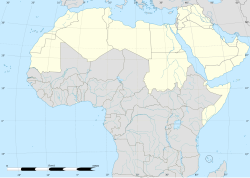 | |
| Continent | Asia and Africa |
|---|---|
| Area | |
| • Total | 13,333,296 km2 (5,148,014 sq mi) |
| Highest point | Jbel Toubkal 4,165 m[1][failed verification] |
| Lowest point | Lac Assal −155 m[2] |
| Longest river | Nile 6,853 km |
| Part of a series on the |
| Politics of the Arab world |
|---|
 |
The Arab world consists of 22 countries[citation needed] located in Western Asia, Northern Africa, the Maghreb, the Horn of Africa, and the Indian Ocean. It covers a combined area of 13 million km2. It extends from Morocco in the west, southward to the Comoros, eastward to Somalia, and northward to Iraq.
YouTube Encyclopedic
-
1/5Views:3 283 5911 8511 193 64411 7181 291 767
-
The difference between Arab Countries (Geography Now!)
-
Geography Part 1 | Countries of the Arab World | Residents of the Arab World | Learn Arabic Free
-
MIDDLE-EAST || World Geography Mapping
-
What makes the Geography of the Middle East so Special?
-
Middle East Explained - The Religions, Languages, and Ethnic Groups
Transcription
Geography of each country
The geography of each country:[citation needed]
Regions
Terrains in the area can be divided into three main types: the large arid desert covering most of it, the fertile south and north, and finally the high mountains of the Atlas, Ahaggar, Zagros and the Anti-Lebanon Mountains, along with the Hijaz Mountain range.
The Arab world can also be divided into two continental parts: Asian, which has 12 states, and African, which is larger and has 10 states.[citation needed] Adjacent to the Arab world are 14 land neighbours and 4 sea neighbours.[citation needed] Geographically, the Arab world countries are further subdivided into four regions:[citation needed]
|
|
|
|
The Arab world has a high population density, with an estimated 350 million inhabitants.[citation needed] Culturally, the Arab states can be divided into 3 regions:[citation needed]
- The Greater Maghreb, which includes Morocco, Mauritania, Algeria, Tunisia and Libya.
- The Fertile Crescent, which includes Lebanon, Syria, Palestine, Egypt, Iraq and Jordan.
- The Arabian Peninsula, which includes Saudi Arabia, UAE, Qatar, Oman, Bahrain, Kuwait and Yemen.
Landscape

Most of the Arab world falls in the driest region of the world. Almost 80% of it is covered in desert (10,666,637 of 13,333,296 km2), stretching from Mauritania and Morocco to Oman and the UAE.[citation needed] The second most common terrain is the semi-arid terrain, which found in all Arab countries except Lebanon and Comoros.[citation needed]
Several deserts span the Arab world:
|
The highest point in the Arab world is in Morocco called Jbel Toubkal, standing 4,165m tall, making it the 40th highest place on earth, and 6th in Africa,[3] next comes Jabal An-Nabi Shu'ayb (at 3,666 m (12,028 ft))[3] in Yemen and Cheekha Dar (at 3,611 m (11,847 ft))[4] in Iraq.
The lowest point in the Arab world is the Dead sea between Jordan and Palestine. At 1,312 feet (400 meters) below sea level it is also the lowest point on Earth.[5]
Climate
The hottest temperature recorded in the Arab world took place in Kuwait from Mid-July to Mid-August 2022, reaching 54.6 °C (130.3 °F) in Kuwait City, breaking a record set in 1987.[6][7]
See also
References
- ^ "Africa Ultra-Prominences" Peaklist.org. Retrieved 2012-01-14.
- ^ Warren, John K. (23 February 2006). Evaporites: sediments, resources and hydrocarbons. Birkhäuser. p. 280. ISBN 978-3-540-26011-0. Retrieved 27 May 2011.
- ^ a b "Arabian peninsula and Middle East" Peaklist.org. Retrieved 2011-11-20.
- ^ "Cheekha Dar, Iraq/Iran" Peakbagger.com. Retrieved 2012-09-06.
- ^ About: What is the lowest point in the world?
- ^ Masters, Jeff. "NOAA: June 2010 the globe's 4th consecutive warmest month on record". Dr. Jeff Masters' WunderBlog. Weather Underground. Archived from the original on 2010-07-19.
- ^ "Kuwait swelters under what some say highest temperature ever recorded on earth". Independent.co.uk. 22 June 2017.
